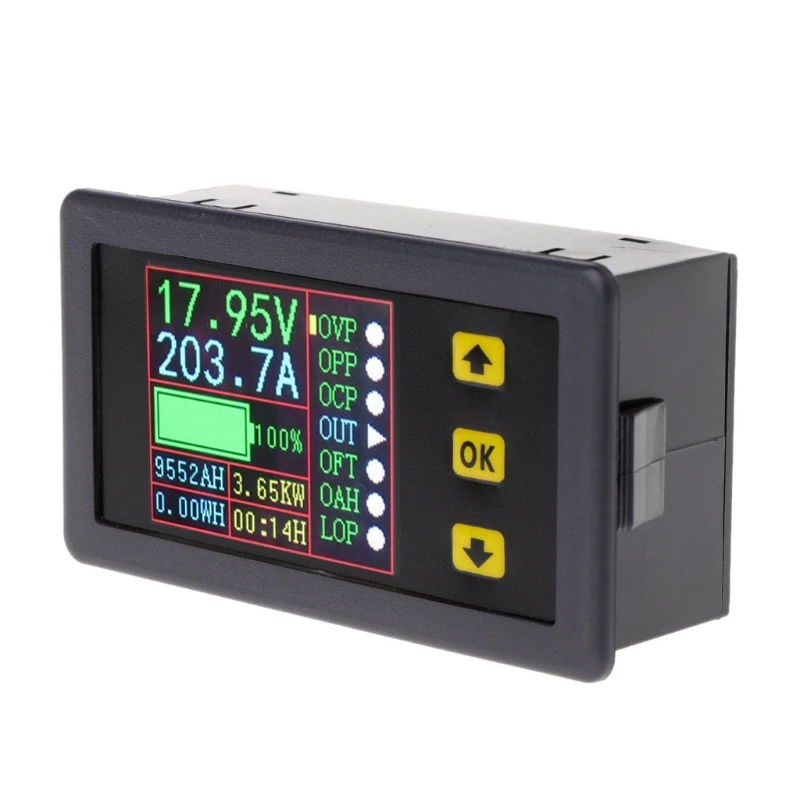

Then touch the black probe to the round (ground) prong protruding from the male end. To test the cord’s ground, push the red probe into the small hole on the female end of the cord. Begin by unplugging the extension cord from the wall and turning the meter’s dial to the Ohm setting. It’s smart to use your meter to occasionally test old extension cords because damaged cords can shock you or start a fire.
Test 1.5 volt battery with multimeter manual#
Check your meter’s manual for what the meter will display when the reading is Out of Limit, Over Limit or Infinite Ohms. With one meter probe touching the ground outlet and the other probe deliberately touching plastic, the meter is describing a condition in which resistance is so high, it can’t read it. The switch is bad if the meter doesn’t beep with the switch flipped to On. The switch is good if the meter beeps with the switch in the On position. Connect the meter across the switch contacts and flip the switch up and down. The symbol for continuity on the meter’s face is a wedge shape that indicates noise waves radiating out from a point. If it doesn’t, the switch is faulty and should be replaced.Īnother simple test is to rotate the meter dial to the position for continuity. Now flip the switch On and the meter should read less than one ohm. At first this doesn’t seem to make sense (you would think the meter would read zero ohms), but the meter is telling you that when no internal contacts are touching inside the switch, the resistance across the open contacts is so large that the meter can’t read it. This means Over Load or Over Limit the resistance is so high that it can’t be measured. With the switch turned off, you should get a reading of O.L (you may also get other readings, such as 99999 or a symbol like this I or even this: L). Now touch the meter’s probes to the brass screw terminals on the side of the switch–it doesn’t matter which probe touches which screw. To test a single-pole switch (the simplest kind it has two brass screws and one green screw).
Test 1.5 volt battery with multimeter how to#
Got a faulty ceiling light? Here’s how to determine if the problem is with its switch. If it doesn’t, the outlet is improperly wired or perhaps the ground is missing call an electrician. Next, remove the black probe from the outlet-leave the red probe in place-and insert the black probe into the small, rounded hole (ground) below the two slots. A properly functioning outlet should produce 110 to 120 volts. Insert the black probe into the longer slot (neutral). Push the tip of the red probe into the shorter (hot) of the two vertical slots on the outlet. Then turn the rotary switch to Volts AC (Vac), which is also indicated by a wavy line on the dial. Plug the black probe into the meter’s black COM jack, and the red probe into the red Volts jack. Here’s how to determine if the wall outlets in your home are delivering the correct voltage, which in most modern homes is 120 volts. Because of the potential for electrical shock performing this test, exercise extreme caution. If a fuse is blown, it only means you can’t measure current, or amps.Voltage reading from an outlet in a modern home will vary from, typically, 110 volts to slightly more than 120 volts. The multimeter will still work in its other functions if fuses are blown.If you're an electrician or have a lot of tools that use the same fuse, then this may be the most cost-effective choice. You can also buy bulk packs of fuses online.If you still aren't sure, contact the manufacturer and ask.

The user manual should also note what type of fuse the device uses. The best way to pick a new replacement fuse is pull the fuses out of the multimeter and get ones that match this type.Close up the meter and run the same test to confirm that the new fuse is working. Pull the defective fuse out and pop the new one in. Unscrew the back of the meter and lift the cover off the housing to reveal the 2 fuses. Go to the hardware store and get a pack of fuses that match your multimeter type. If the multimeter doesn’t produce a reading for one or both fuses, then you can get new ones made for that multimeter type.

Replace any fuse that doesn’t show continuity when you measure it.


 0 kommentar(er)
0 kommentar(er)
